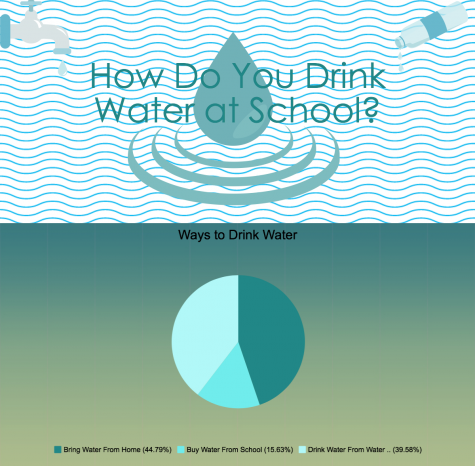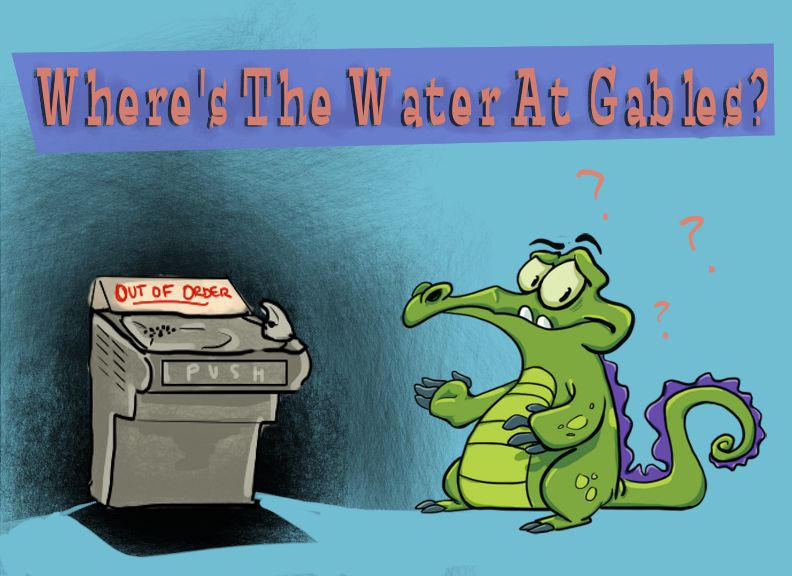Much like the popular app “Where’s My Water?”, many Gables students are left wondering where they could find working water fountains in school.
Where’s the Water @ Gables?
Mar 9, 2017
Since the beginning of the school year, finding a working water fountain at Gables is a mission and the number has only been declining since then. A very small amount of water fountains work, and the few that do work don’t always supply cold drinkable water but instead offer luke-warm metallic tasting water. For a school housing around 3,500 students and a countless number of faculty, there needs to be a more serious effort in renovating and restoring the water fountains and ensuring that there is a working water fountain near all classrooms.
During his presidency, Barack Obama signed the Healthy Hunger-Free Kids Act in 2010 which required schools to make free drinking water available to students during meals. This was mainly to prevent students from turning to soda or any unhealthy drinks. If schools should be encouraging water consumption then why are there not as many working water fountains as there once was? Schools should be implementing measures that ensure fresh, clean water to students and not force them to pay for water from the vending machines. The water problem at school has even driven some students, like junior Yanik Ariste, to conduct a science experiment to test the safety of the water at school.
“I tested water fountains around the school for the prescence of lead and for their amount of total dissolved solids (TDS). Luckily, for all 24 of my experiment trials, no lead was found and the level of TDS was well below the limit for excellent quality according to the [World Health Organization],” junior Yanik Ariste said
Even though the results of the experiment showed that the drinking water is safe to consume does not show the actual limited amount of water fountains at our school. Also, since Gables is an older school there are more traditional water fountains, which are very outdated and do not have enough water pressure to let people drink from them hygienically. Not to mention, the drains of most fountains are either clogged with trash or gum from the negligence of its last user. The fountains could also be improved by adding another level of filtration that takes away the chemical-flavor from the water.
“I’ve always chosen not to drink water from the water fountains because they’re pretty gross. Most of the time the water is warm, so I just drink from water bottles,” senior Julene Valmana said
Students were surveyed for their water-drinking methods: bringing water from home, purchasing water from school, or drinking from the school water fountains. While conducting the survey, it was clear that if the water fountains at school worked, many students would not feel the need to bring water bottles from home to school. The fact that students need to go hunt for a working water fountain is discouraging enough for students to just choose to bring water from home. Also, when their refillable water bottles run out, many students resort to drinking from the schools fountains out of desperation, whereas some simply do not drink water and increase the dehydration problem.
Even Gables students have taken to social media to share their opinion on the water crisis at school, especially when yellow water started coming out of the pavilion’s water fountain. To view the tweet click here.
Without working water fountains, students have to go on a quest to find a working water fountain with cold water. Even some that do work are either dirty or have warm water that doesn’t even taste right. Something as simple as drinkable water should be easy for a school to supply, unfortunately that’s just not the case.

